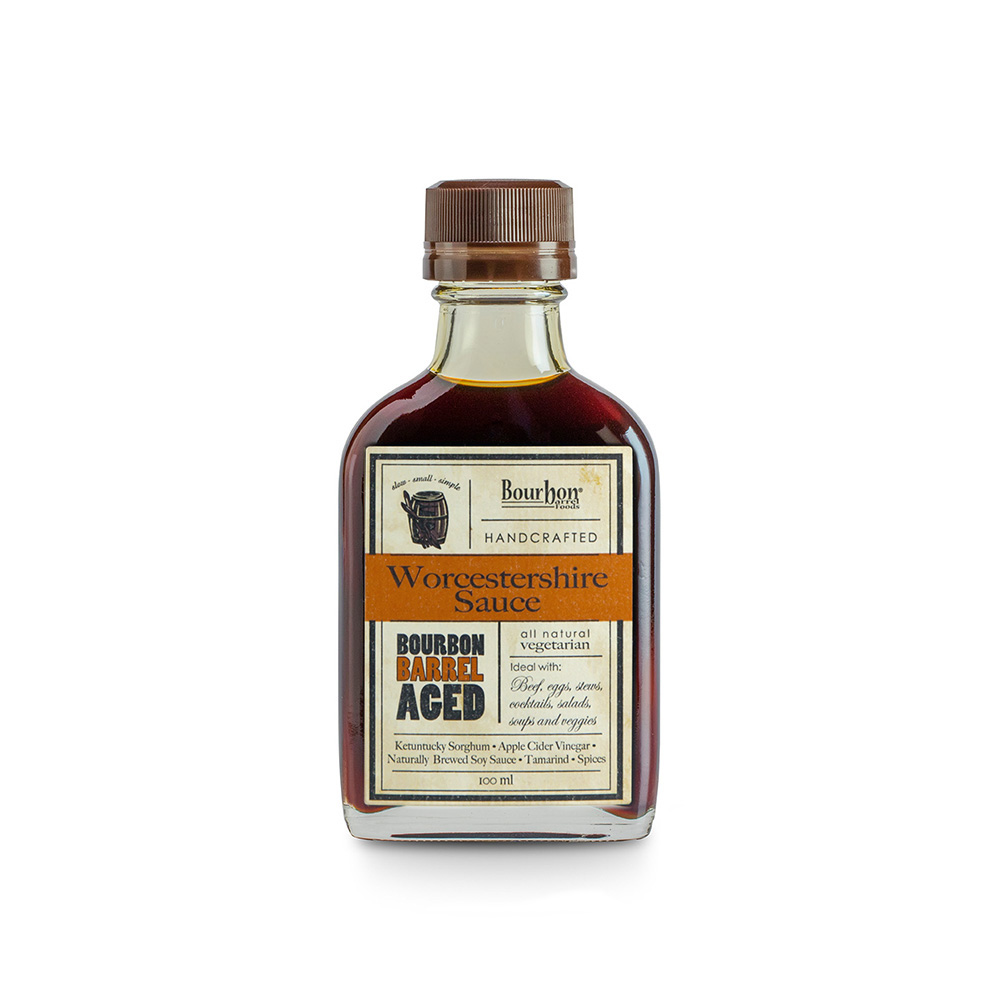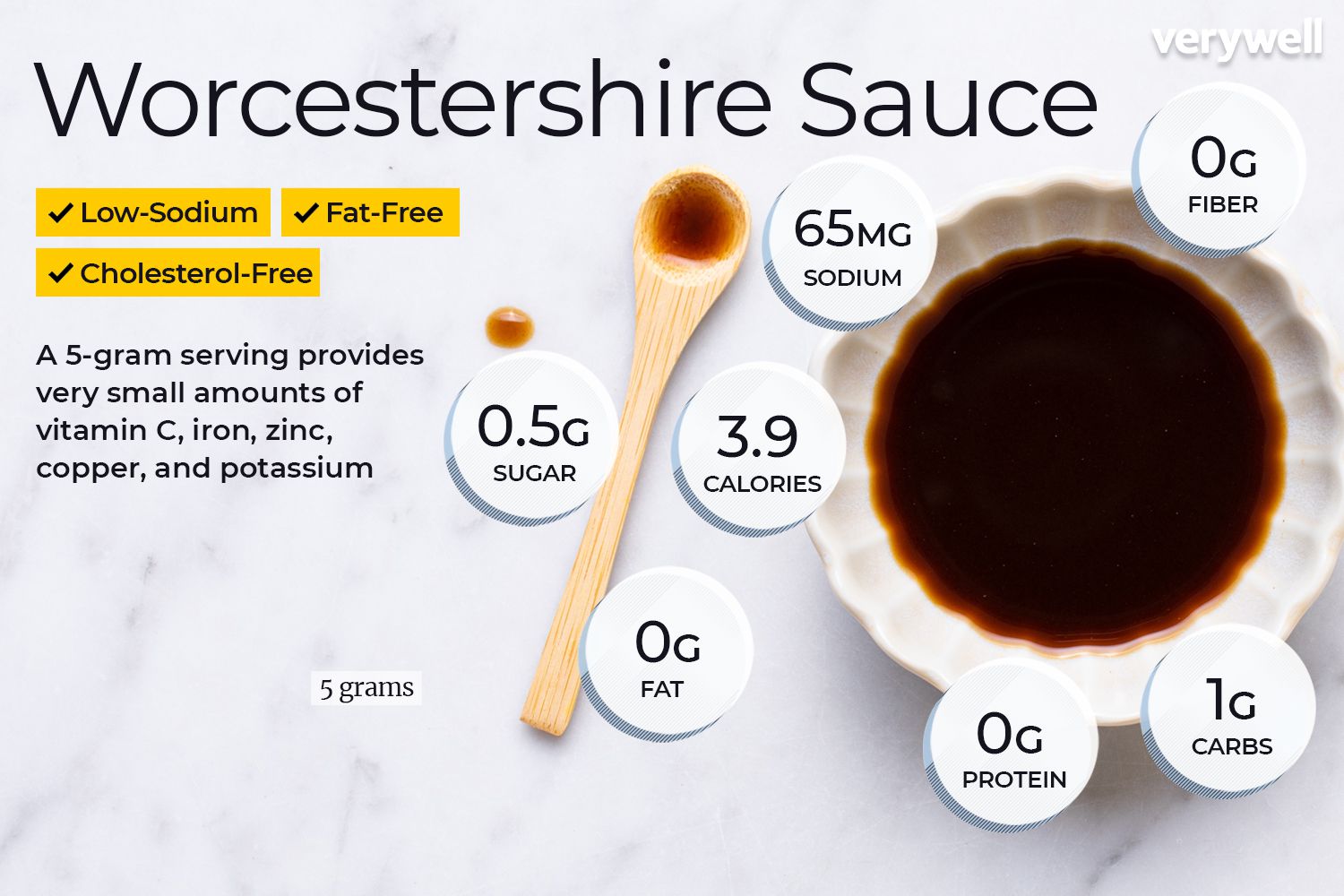
Introduction
Exploring The Origins Of Soy Sauce And Worcestershire Sauce
In the realm of condiments, Soy Sauce and Worcestershire Sauce stand out for their distinct flavor profiles and cultural roots. Soy Sauce, originating from East Asia, particularly China and Japan, has been a staple ingredient in Asian cuisine for centuries. Its rich umami elements and deep flavors have contributed to its widespread popularity. On the other hand, Worcestershire Sauce hails from the Western world, with its roots tracing back to England. This sauce is known for its tangy and savory notes, adding a unique touch to various dishes.
When examining the origins of these sauces, it becomes evident that Soy Sauce and Worcestershire Sauce have distinct cultural and historical backgrounds. Soy Sauce has been an integral part of Asian culinary traditions, with different regional variations and production methods contributing to its diverse flavor spectrum. In contrast, Worcestershire Sauce was created in the 19th century by chemists Lea and Perrins in Worcester, England, showcasing the innovation and experimentation in Western flavor profiles.
Significance Of Soy Sauce And Worcestershire Sauce In Culinary History
The significance of Soy Sauce and Worcestershire Sauce in culinary history cannot be understated. Soy Sauce has played a vital role in shaping the flavors of Asian dishes, offering a complex and savory depth that enhances the overall taste experience. Its versatility in both traditional and modern cooking has solidified its position as a pantry essential in households worldwide.
On the other hand, Worcestershire Sauce has left a lasting impact on Western cuisine, with its unique combination of ingredients creating a distinct tangy and umami flavor profile. It has become a key ingredient in recipes ranging from marinades to dressings, showcasing its adaptability and versatility in various culinary applications.
Exploring The Origins Of Soy Sauce And Worcestershire Sauce
Significance Of Soy Sauce And Worcestershire Sauce In Culinary History
In the realm of condiments, Soy Sauce and Worcestershire Sauce are notable for their unique flavor profiles and cultural heritage. Soy Sauce, originating from East Asia, specifically China and Japan, has been a culinary mainstay in Asian cuisine for centuries. Renowned for its rich umami taste and complex flavors, it has gained wide popularity. On the other hand, Worcestershire Sauce has its roots in the Western world, originating from England. Known for its tangy and savory undertones, it imparts a distinctive flavor to various dishes.
When delving into the history of these sauces, it becomes apparent that Soy Sauce and Worcestershire Sauce have diverse cultural and historical backgrounds. Soy Sauce has been an integral component of Asian culinary traditions, with different regional variations and production techniques influencing its wide flavor range. In contrast, Worcestershire Sauce originated in the 19th century, developed by chemists Lea and Perrins in Worcester, England, showcasing Western innovation in flavor profiles.
The Distinctive Flavors And Aromas Of Soy Sauce
The rich umami taste of Soy Sauce adds depth and complexity to dishes, enhancing the overall culinary experience. Its deep flavors have made it a staple ingredient in Asian cooking, contributing to its widespread use and versatility across traditional and modern recipes.
Various Types And Uses Of Soy Sauce In Cooking
Soy Sauce comes in various types such as light, dark, and tamari, each offering unique flavors and intensities. It is used in a myriad of dishes including stir-fries, marinades, dipping sauces, and more. Its ability to enhance the savory aspects of a dish makes it a versatile ingredient in different culinary applications.
Worcestershire Sauce Overview
Tangy And Savory Profile Of Worcestershire Sauce
Worcestershire Sauce boasts a distinct tangy and savory flavor profile that sets it apart from other condiments. Its unique combination of sweet, tangy, savory, and sour notes creates a well-rounded taste that can elevate a wide range of dishes.
Historical Background And Popular Applications Of Worcestershire Sauce
Worcestershire Sauce has a rich historical background, originating from England in the 19th century. Originally developed by chemists Lea and Perrins in Worcester, England, this sauce has become a staple in Western cuisine. Its versatile flavor profile makes it a popular choice for marinades, sauces, dressings, and more, adding depth and complexity to dishes across different culinary traditions.

Flavor Profile Showdown
Contrasting Tastes Of Umami-rich Soy Sauce And Tangy Worcestershire Sauce
Soy sauce offers deep umami flavors combined with a subtle saltiness, making it a fundamental component in Asian cuisine. In contrast, Worcestershire sauce presents a tangy and savory profile with a hint of sweetness, providing a distinct taste experience.
Complementary And Unique Characteristics Of Each Sauce
| Soy Sauce | Worcestershire Sauce |
|---|---|
| Deep umami flavors | Tangy and savory profile |
| Hint of saltiness | Touch of sweetness |
| Staple in Asian cuisine | Versatile in Western dishes |
| Enhances savory dishes | Elevates marinades and dressings |
| Not interchangeable with Worcestershire sauce | Offers a different flavor dimension than soy sauce |
When comparing soy sauce and Worcestershire sauce, it’s clear that each condiment brings unique characteristics to the table, enhancing dishes in different ways. Soy sauce’s umami richness complements savory flavors, while Worcestershire sauce’s tanginess adds a lively kick with its touch of sweetness. Understanding the distinct qualities of these sauces allows chefs to leverage their individual strengths in creating diverse and flavorful culinary creations.
Culinary Uses Of Soy Sauce And Worcestershire Sauce
Incorporating Soy Sauce And Worcestershire Sauce In Different Cuisines
Whether you’re preparing Asian delicacies or Western favorites, soy sauce and Worcestershire sauce offer unique flavor profiles that can elevate a wide range of dishes. While soy sauce is a staple in Asian cuisine, adding depth and umami richness to stir-fries, marinades, and sushi, Worcestershire sauce shines in Western dishes like meats, gravies, and dressings, bringing a tangy and savory kick.
Enhancing Various Dishes With The Depth Of Flavor From The Sauces
Each sauce brings a distinct element to the table when it comes to enhancing dishes. Soy sauce enhances the savory notes in dishes like teriyaki chicken or soy-glazed vegetables, while Worcestershire sauce adds complexity to barbecue sauces, meat marinades, and even Bloody Mary cocktails. By understanding the unique characteristics of these sauces, chefs can play with flavors and textures to create culinary masterpieces that cater to different palates.
When it comes to soy sauce vs. Worcestershire sauce, their varying flavor profiles and uses make them indispensable ingredients in the kitchen. Experimenting with both sauces can open up a world of possibilities, allowing you to tailor your dishes to your preferred taste preferences and culinary traditions.
Cooking Tips And Pairings
Best Practices For Using Soy Sauce And Worcestershire Sauce In Recipes
When incorporating soy sauce and Worcestershire sauce into your recipes, it’s essential to consider their individual flavor profiles. Use soy sauce when aiming for a rich umami taste in Asian dishes such as stir-fries and sushi. For a tangy kick in Western cuisines like steaks and burgers, opt for Worcestershire sauce. Additionally, try blending the two sauces together for a unique flavor combination that can elevate your culinary creations.
Food Pairings That Complement The Umami And Tangy Notes Of The Sauces
To make the most of the umami depth of soy sauce, pair it with dishes like teriyaki chicken, sushi, or stir-fried vegetables. On the other hand, enhance the tangy flavor of Worcestershire sauceby using it in meat marinades, gravies, or as a condiment for burgers and steaks. Experiment with different combinations to find the perfect balance of flavors that suit your palate.
By understanding the distinct characteristics and culinary uses of soy sauce and Worcestershire sauce, you can create a diverse array of dishes that cater to various flavor preferences. Incorporating these sauces into your cooking repertoire opens up a world of possibilities, allowing you to experiment with different cuisines and delight your taste buds with a blend of savory and tangy notes.

Health Benefits And Nutritional Value
Nutritional Comparison Between Soy Sauce And Worcestershire Sauce
To compare the nutritional contents of soy sauce and Worcestershire sauce (100g each), it is important to note that both sauces are high in potassium. However, there are differences in their health profiles.
| Nutrient | Soy Sauce | Worcestershire Sauce |
|---|---|---|
| Calories | Lower calorie content | – |
| Amino Acids | Beneficial amino acids | – |
| B Vitamins | – | Contains B vitamins |
Potential Health Benefits And Considerations Of Consuming The Sauces
In terms of health benefits, soy sauce is often considered the healthier option due to its lower calorie content and beneficial amino acids. On the other hand, Worcestershire sauce can provide nutrients like B vitamins, contributing to overall health.
When using these sauces in cooking, it’s essential to consider their individual flavor profiles. Soy sauce adds a rich umami taste to Asian dishes, while Worcestershire sauce provides a tangy kick to Western cuisines. Mixing the two sauces can create a unique flavor blend for various culinary creations.
To maximize the flavors of soy sauce, pair it with dishes like teriyaki chicken, sushi, or stir-fried vegetables. Worcestershire sauce complements meat marinades, gravies, burgers, and steaks. Experimenting with different combinations can offer a balance of savory and tangy notes to suit individual preferences.
Culinary Debate: Soy Sauce Vs. Worcestershire Sauce
Which Sauce Reigns Supreme In Different Dishes And Cooking Styles?
When examining the culinary uses of soy sauce and Worcestershire sauce, it becomes evident that each sauce brings a unique flavor profile to dishes. Soy sauce, with its rich umami taste, tends to shine in Asian cuisine. Its depth of flavor enhances dishes like teriyaki chicken, sushi, and stir-fried vegetables. On the other hand, Worcestershire sauce offers a tangy kick that complements Western dishes such as meat marinades, gravies, burgers, and steaks. The choice between the two sauces often depends on the desired flavor outcome and the type of cuisine being prepared.
Exploring Cultural Significance And Adaptability Of Soy Sauce And Worcestershire Sauce
Soy sauce and Worcestershire sauce boast rich cultural backgrounds and have adapted to various cuisines worldwide. Soy sauce, originating from East Asia, particularly China and Japan, has become a staple condiment globally. Its umami flavor has influenced a wide array of dishes beyond traditional Asian fare. In contrast, Worcestershire sauce, with its roots in British cuisine, has also found its way into international cooking. Its versatility in adding a tangy and savory element makes it a popular choice in both home kitchens and professional culinary settings. The adaptability of these sauces showcases how they can elevate a multitude of dishes with their distinct yet complementary flavors.
Culinary Debate: Soy Sauce Vs. Worcestershire Sauce
Which Sauce Reigns Supreme In Different Dishes And Cooking Styles?
When examining the culinary uses of soy sauce and Worcestershire sauce, it becomes evident that each sauce brings a unique flavor profile to dishes. Soy Sauce with its rich umami taste, tends to shine in Asian cuisine. Its depth of flavor enhances dishes like teriyaki chicken, sushi, and stir-fried vegetables. On the other hand, Worcestershire Sauce offers a tangy kick that complements western dishes such as meat marinades, gravies, burgers, and steaks. The choice between the two sauces often depends on the desired flavor outcome and the type of cuisine being prepared.
Exploring Cultural Significance And Adaptability Of Soy Sauce And Worcestershire Sauce
Soy Sauce and Worcestershire Sauce boast rich cultural backgrounds and have adapted to various cuisines worldwide. Originating from East Asia, particularly China and Japan, Soy Sauce has become a staple condiment globally. Its umami flavor has influenced a wide array of dishes beyond traditional Asian fare. In contrast, with its roots in British cuisine, Worcestershire Sauce has also found its way into international cooking. Its versatility in adding tangy and savory elements makes it a popular choice in both home kitchens and professional culinary settings. The adaptability of these sauces showcases how they can elevate a multitude of dishes with their distinct yet complementary flavors.
Conclusion
FAQ About Soy Sauce Vs Worcestershire Sauce: Savory Sauce Showdown
Q: What is the main difference between soy sauce and Worcestershire sauce?
A: The main difference lies in their ingredients and flavor profiles. Soy sauce is made from fermented soybeans and primarily tastes salty, while Worcestershire sauce contains a blend of ingredients such as anchovies, tamarind, onions, and garlic, resulting in a more complex umami flavor.
Q: Can soy sauce be used as a substitute for Worcestershire sauce?
A: While soy sauce can add saltiness to dishes, it lacks the depth of flavors found in Worcestershire sauce. Substituting soy sauce for Worcestershire sauce may alter the intended taste of a recipe, especially in dishes where Worcestershire sauce plays a significant role.
Q: In what types of dishes is soy sauce preferred over Worcestershire sauce?
A: Soy sauce is commonly used in Asian cuisine, including stir-fries, marinades, and dipping sauces. It enhances the umami taste and adds depth to dishes. Worcestershire sauce, on the other hand, is often preferred in Western dishes like stews, steaks, marinades, and Bloody Mary cocktails.
Q: Are soy sauce and Worcestershire sauce gluten-free?
A: Traditional soy sauce is gluten-free if it’s made using only soybeans, water, salt, and fermentation starters. However, some soy sauces may contain wheat, so it’s important to check labels for gluten content. Worcestershire sauce typically contains anchovies and may include malt vinegar, which could contain gluten.
Q: How should these sauces be stored?
A: Both soy sauce and Worcestershire sauce should be stored in a cool, dark place, away from direct sunlight and heat sources. Once opened, they should be kept in the refrigerator to maintain freshness and flavor. It’s recommended to check the individual packaging for specific storage instructions.

Gourmet Tiger, a culinary sensation, was established with a vision to delight taste buds and create unforgettable dining experiences. Specializing in cakes, casseroles, lunch, catering, and more, Gourmet Tiger has become a household name synonymous with exquisite flavors and impeccable service. Since its inception, Gourmet Tiger has been dedicated to crafting delectable treats and savory dishes that exceed expectations. Their commitment to using only the finest ingredients and innovative culinary techniques has set them apart as a leader in the food industry.